Paper Doll
How Professional Organizers (& Hair Stylists) Reverse Some Intolerable Problems
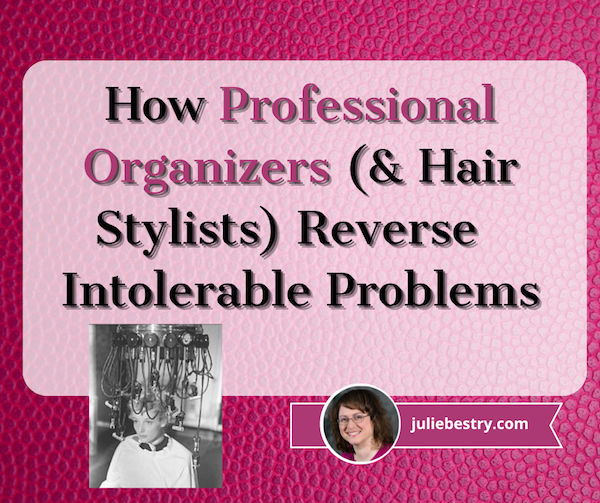
Kabarett der Komiker; Gisela Schlüter unter Friseurhaube by Willy Pragher (CC BY 3.0)
What’s annoying you today? What’s been annoying you so long that you almost don’t notice the annoyance until someone else mentions it?
Over Labor Day weekend, my air conditioner died. This was an acute problem, one that I noticed almost immediately (as the temperature was rising overnight instead of going down) and which led to much misery until the holiday weekend ended and the maintenance staff could address the problem fully.
(To be fair, they did bring a mobile A/C unit, which cooled my bedroom to a bearable temperature; unfortunately, it was so loud, I felt like I was sleeping adjacent to a jet engine. Sometimes, you trade one intolerable thing for another. That’s often what keeps you from seeking, or implementing a solution in the first place.)
That same weekend, I realized that my fridge was dying. Unlike the A/C unit, this was a less obvious thing to tolerate. The freezer was still working perfectly, and the contents of the fridge weren’t warm; they just weren’t entirely full-on chilly. Weeks earlier, the refrigerator had been making some moaning noises, but fiddling with the settings of the circa-1986 fridge seemed to stop the noise. And then I stopped noticing.
Two household problems, but one felt a lot more urgent than the other. But these weren’t the only problems.
Early in the pandemic, to ensure everyone’s safety, our complex had asked us to understand that they’d only be performing inside maintenance for emergencies. So, when we had torrential rains in the summer of 2020, the roof was repaired immediately; the ceiling, well, not so quickly.
When my hot water heater expired in the spring of 2021, I vacated my home and the nice gentlemen figured out the complexities of draining a water heater on the second floor to enable removal and installation of a new one. And later that summer, my smoke detector decided to start beeping in eight sequences of three loud bursts, every ten minutes, ALL.NIGHT.LONG. That was something I could not tolerate (and thankfully, the leasing office agreed).
However, there were other, smaller repairs where I managed DIY solutions or made do. It was easier to avoid contact during the pandemic for non-emergency issues. And then I just started tolerating some inconveniences.
WHAT YOU TOLERATE NEVER GOES AWAY
A few years ago, in Organize Away Frustration: Practice The Only Good Kind of “Intolerance,” we discussed how the first step to creating the kind of life you want is to start by identifying the unsatisfying things that you tolerate. Knowing what makes you unhappy helps you create a strategy for eliminating those “tolerations,” the obstacles to your happiness. (This is true with organizing tangible items, as well as dealing with things in your schedule, and even non-organizing things, like annoyances in our relationships and whether we live our true values.)
Knowing what makes you unhappy helps you create a strategy for eliminating those 'tolerations,' the obstacles to your happiness. Share on XAs I mentioned in that prior post, I see part of my role as a professional organizer and productivity expert as helping my clients identify the areas in which they’ve been tolerating inconveniences far too long. Recent client situations have included:
- Carla* never could find gift certificates when she was ready to use them. They were always in drawers, or in the greeting cards with which they were given. We collected all of them and then separated restaurant gift certificates from shopping gift certificates. The former might be used on any given evening when she and her spouse were already out of the house and might drop in somewhere to eat, so we created a wallet for dining out cards. For the latter, given that Carla only shopped on Saturday, we clipped them together and put them in the Saturday slot of her tickler file. (Every new gift card or certificate went to one of those two places from then on.)
- Joe always had trouble figuring out how to adjust the settings on his DVR. It didn’t help that his box of manuals included instructions for every gadget and device he’d owned since the early 1970s. We purged all of the manuals that applied to defunct gadgets, created folders in the “household” section of the Family Files with one folder for each type of technology (computers, entertainment, kitchen, etc.) But then we scanned the DVR instructions that plagued him as a PDF and put it in the Notes app on his phone so it was even easier to access (and enlarge).
- Jenny’s pantry was crowded with ingredients, including a wide variety of items marked “gluten-free.” But nobody in Jenny’s household was avoiding gluten! It turns out that an occasional weekend houseguest cooked while visiting and she needed gluten-free ingredients. We rearranged the pantry so that the occasional guest had her own labeled shelf, and everyone was happier.
- Patsy saw that when she’d click on a link, her browser would sometimes give her a “web kit error” or just a blank page. She’d been copying the link from one browser (Safari) to another (Chrome) where it would work just fine, but lately, she’d been having to do that more and more, increasing her frustration. Upgrading her operating system allowed her to upgrade her browser, and she no longer had to struggle.
* All names have been changed to protect client confidentiality.
Sometimes professional organizers are dealing with clutter, but all organizers end up dealing with obstacles to productivity. The problem is that we’re all more likely to ignore a problem that can’t be fixed immediately.
When we’re focused on the task at hand, whether that’s work or school or driving or parenting, the thing we’re doing is more likely to have a deadline or at least be time-based. We postpone removing the obstacle until such time as it becomes too large or problematic to withstand. This is what happens when people keep driving with the “Check engine” light glowing on their dash panel.
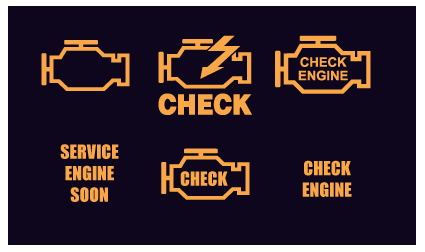
RECENT TOLERATIONS TACKLED
As I wrote about in Organize Away Frustration: Practice The Only Good Kind of “Intolerance,” many of the “intolerables” in our lives can be conquered with a little research and applying one of the following:
- A product
- A service
- A change in behavior
- A change in attitude
In that post, I shared how I was almost unrelievedly ecstatic to find a new kind of shower curtain hook that made changing out shower curtain liners much easier on my short-of-stature self. Today, I’d like to share just a few recent examples of how applying a combination of solutions have removed annoyances.
A Tale of Two TVs
Do you have any of those old, boxy CRT TVs in your home? I did. In fact, I had three, which is kind of ridiculous when you realize I’m a singleton. You see, I’d had a television in my living room and another in my bedroom. When the bedroom TV died (so long ago that I’m embarrassed to discuss the exact date), I moved the living room TV to the bedroom.
When I met a friend for lunch one day, she surprised me by having brought one of her old, boxy CRT TVs for my use! To this day, I’m flummoxed as to how she ever got it into her car, and though I recall basically rolling/sliding it up the carpeted stairs of my apartment, I’ve got no idea how I ever managed to get it from my car to my own front door. (Perhaps this is like how they claim women forget the pain of childbirth?)
Eventually, I got a modern flat-screen TV for my living room. But I also embraced the advice not to have screens in the bedroom (to avoid that sleep-stealing blue light) and got rid of cable in that room. Thus, I had a broken TV, a gifted (no longer used) TV, and an unused TV. All on the second floor of my home.
Did I mention these are big, heavy, boxy TVs?

Remember how I said I had my hot water heater replaced last year? Well, one of those TVs took up most of the empty space at the top of the staircase, and so even though our apartment complex had been pretty insistent that we were never to ask the maintenance men to carry or remove anything unrelated to their work, the guys decided that it would be to everyone’s benefit to get that one TV out. Yay! But that still left two.
To be fair, I wasn’t always just tolerating the annoyance of having two unused, dust-catching, space-hogging CRT TVs in my home. I had called the various junk haulers in town, but they wanted a frustratingly large fee for something that I could have done myself, had I only been stronger, had slightly longer arms to get fully around the TVs, and had been a bit taller (so I could have seen the stairs over the top of the TVs and not feared tumbling down).
Yes, even we professional organizers fall prey to those self-imposed obstacles. Had I thrown a little money at the problem, it would have been solved back then.
I also called many non-profits, but nobody wanted donated CRTs.
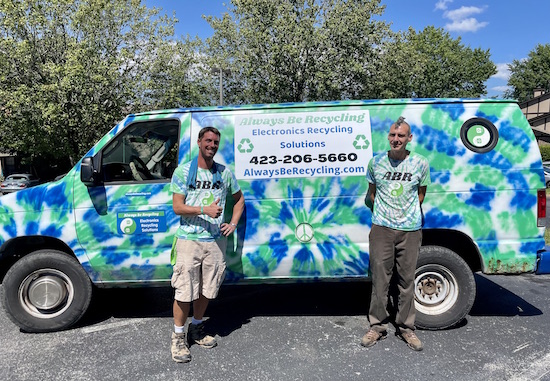
Fast forward to late August, when I contacted Chattanooga’s Always Be Recycling. The owners, a couple who’d moved from Pennsylvania, opened their business here just at the start of the pandemic. I’d networked online with Leann Cinaglia to see how their services might dovetail with my clients’ needs. The last time we’d spoken, they weren’t able to handle CRTs because of the difficulty in recycling them, but on a day where the frustration had just gotten too high, I called to see if they might have any suggestions for other solutions. And that’s where the magic happened!
It turns out that annoyingly boxy 20″ CRT TVs have become popular with the retro gaming crowd! After one short phone call, Always Be Recycling’s co-owner Jamison Cinaglia and his associate Bret (pictured above) arrived on time the next day and quickly removed both TVs and oodles of old landline phones, cables, and cords as well — at no charge. (Had I lived significantly farther from their venue, there would have been a fee, but significantly less than the various junk haulers had quoted me.)
Throughout the entire interaction, they were professional, careful, friendly, and polite. This bodes well for knowing they’ll treat my clients, especially the elderly and/or delicate ones, with respect and compassion.
So, this is a reminder that sometimes, the key is to continue to ask for input on solutions until the right one appears.
No Longer Hot Under the Collar
Not all intolerances are about excess or clutter. A major frustration in my life is heat. (And no, that’s not specific to the air conditioning and refrigerator woes.) I’m just always too hot. I hydrate. I wear temperature-appropriate clothing. But no matter what, even my head perspires and my hair frizzes and I end up looking like Art Garfunkel. (No offense, Art.)
And yes, I realize that a Buffalonian living in the Deep South might have found a more obvious solution to that problem over three-plus decades.
I’ve tried those evaporative cooling neck scarves and “chilly towels.”
A New VIP: A Form You Didn’t Know You Needed

Brown Plush Bear Patient Photo by Kristine Wook on Unsplash
As a professional organizer for 20 years, I am rarely stumped by organizing-related questions, especially those having to do with vital documents or what I call VIPs (very important papers). However, a client recently presented me with an article making a recommendation for a particular document, and it sent me down a rabbit hole of research.
THE USUAL SUSPECTS: VIPS AND HOW TO MAINTAIN THEM
Over the past years, we’ve discussed (at length) the essential documents everyone should have and how to organize and keep them safe. Posts covering these topics have included:
How to Create, Organize, and Safeguard 5 Essential Legal and Estate Documents
The Professor and Mary Ann: 8 Other Essential Documents You Need To Create
Ask Paper Doll: Do I Really Need A Safe Deposit Box?
Paper Doll’s Ultimate Guide to Getting a Document Notarized
Over the years, we’ve looked at documents granted by a government entity, like birth and marriage certificates, divorce decrees and custody documents, citizenship and military separation papers, passports, and Social Security cards.
We’ve also reviewed essential documents you must create for yourself (or with assistance), including home inventories, insurance policies, estate planning documents (like wills and trusts, pre- and post-nuptial agreements), and living wills (also known as advanced medical directives).
And, for ensuring that your loved ones can take care of you (and you can take care of them) in the event of incapacitation, we have always accented the importance of having both a Durable Power of Attorney for finances and Durable Power of Attorney for healthcare (known in some states as a healthcare proxy).
BEHOLD: THE POWER OF ATTORNEY
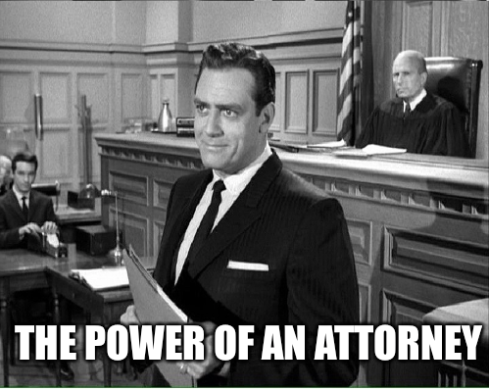
A Durable Power of Attorney for financial decisions is necessary if you are unable to make financial decisions or take financial actions on your own. This might occur if you are ill and lack the cognitive capacity to make your own decisions (such as if you’re comatose, heavily medicated, or experiencing some sort of dementia), but it might also come in handy in other circumstances.
Imagine that you are taking an around-the-world cruise or hiking in the Himalayas. In such cases, communication may be spotty or impossible. If the stock market were tanking or a financial opportunity of great importance occurred, or if your return were delayed and you needed to make sure your child’s college tuition was paid or some other financial arrangement was secured, knowing that someone with your Power of Attorney for financial concerns was handling everything would certainly put your mind at ease.
A Durable Power of Attorney for healthcare, or a healthcare proxy, is similarly important if you are unable to make your own healthcare decisions, pretty much for the same reasons initially outlined. If you are physically or cognitively incapacitated and need someone to make decisions on your care, it’s essential to have that paperwork in place.
And, as a periodic reminder to all parents who’ve recently sent their kids off to college, without a Power of Attorney for healthcare or healthcare proxy in place, if your away-at-school adult child were ill and had not granted you PoA for healthcare, the college’s health center or local hospital would not be allowed to provide you with any information about your child’s condition or care.
So, Power of Attorney documents are pretty darned important. You want them in place so that your spouse, partner, adult child, or trusted friend or advisor can be kept informed of your situation and can, if necessary, make decisions and take actions on your behalf.
This is the be-all and end-all of advice we paper specialists generally need to give. But guess what? We’ve been missing a pretty important document related to older adults!
BEYOND THE POA: THE DOCUMENT YOU DIDN’T KNOW YOU NEEDED
Let’s imagine your spouse is 65 or older. Or perhaps we’re talking about your parent, or another slightly older loved one. (I say slightly older, as now that Paper Doll has reached 55, the age of 65, when you can get Medicare coverage, doesn’t seem that far off.) Or perhaps you’re the one with Medicare.
You’d assume that as long as Powers of Attorney had been executed with regard to financial and medical decisions, then everything would be A-OK. Right?
Mostly. But not entirely.
It turns out that, by law, if you want someone (your spouse or significant other, your adult child, your caregiver, etc.) to speak to Medicare on your behalf, having a both a Durable Power of Attorney for financial issues and one for medical issues is not enough.
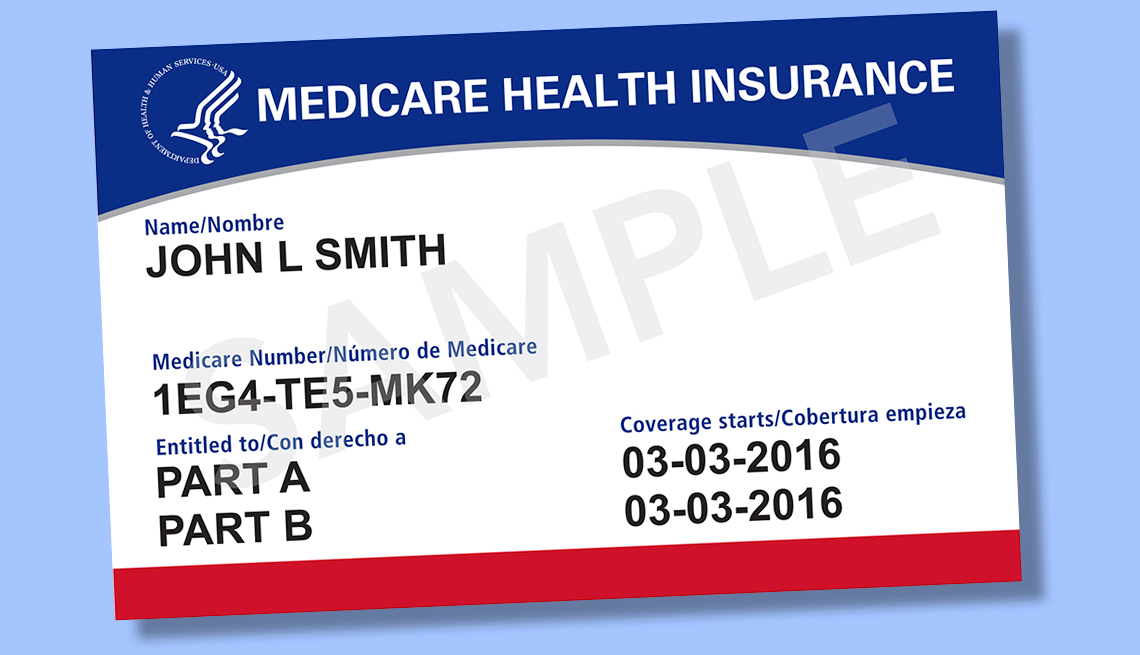
Perhaps because each state has a different variation on PoA forms, or perhaps because the government just likes to be wackadoodle, Medicare requires you grant prior authorization via a surprisingly under-mentioned form called the 1-800-MEDICARE Authorization to Disclose Personal Health Information Form or CMS-10106. (Doesn’t that just roll trippingly off the tongue?)
You must fill out the CMS-10106 well in advance if you want someone to potentially be able to discuss any of the following with Medicare:
- Medicare eligibility
- Medicare claims
- Plan enrollment (including part D or other drug plans)
- Payment of premiums
- Other information, including payments to beneficiaries
So, if you have Medicare, are you thinking “Whoops!” and wondering what happens if you have secured your financial and healthcare PoAs but haven’t ever filled out this authorization?
It turns out there’s a quirky loophole. If a person HAS done both of their PoA forms but hasn’t actually filled out this authorization form, it’s entirely not a catastrophe. That’s because the person who fills out the form has to be either one of the following:
- the beneficiary (that is, the person on Medicare)
OR
- the personal representative of the person on Medicare (that is, the person who has the Powers of Attorney, or otherwise has been granted authorization over your information).
So, yes, if you’re the person with the Power of Attorney for a Medicare beneficiary, you can authorize yourself to let Medicare talk to you about someone’s health and payment information. And if that seems a little weird to you, well, you’re not the only one.
The problem is that if someone hasn’t ever filled out the CMS-10106 in advance and their personal representative has to do it, it’ll take time to process because you have to MAIL it to Medicare.
That’s right — you can’t submit the authorization form online or even by fax. You have to mail it, like it’s 20th century, to a post office box in Lawrence, Kansas!
Do (Not) Be Alarmed: Paper Doll’s Wake-Up Advice for Productivity
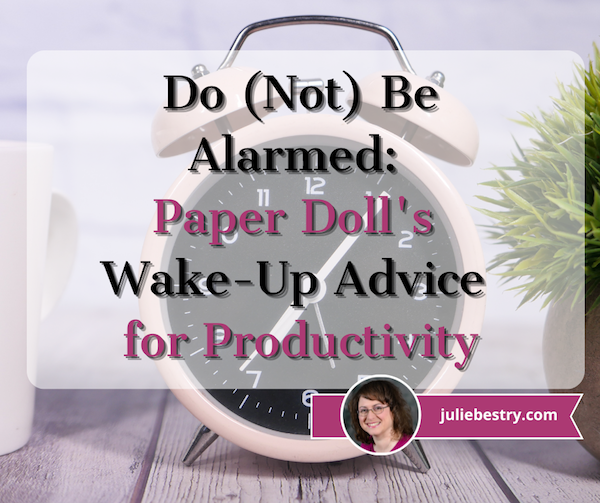
September’s approach means many things: a new school year, a new television season, Europeans coming back from their August-long vacations.
But in September, when I see kids lined up for the school bus, I remember when I went to kindergarten and Paper Mommy bought me a giant, orange, retro, two-bell alarm clock.
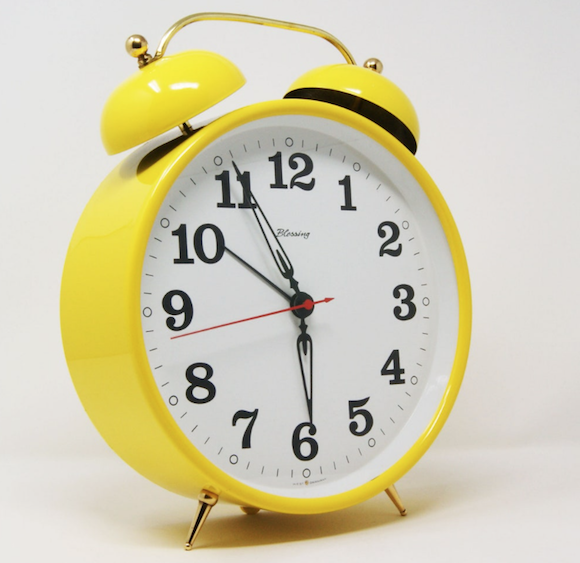
(I realize this is yellow and not orange, but we don’t have a photo of my childhood alarm clock. This is a very close reproduction.)
You could see the clock from any vantage point in my room, and the ring was sonorous. There was no way I’d ever oversleep and miss the school bus with that loud din. (Initially, as with all school-related things that year, I was excited. But it takes about three days of being awakened by something that loud for the delight to wear off.)
If you think about it, time management and productivity begins with waking up in time to set your plans in motion, so I thought we’d take a foray into idea of waking up on time.
A SHORT HISTORY OF ALARM CLOCKS
The alarm clock — even the very concept of waking up at a specific time — is fairly new.
Throughout history, people were generally awakened by natural occurrences: the sun rising (and warmth on one’s face or light in one’s eyes), the crowing of roosters, the crying of babies, or the call of nature. City dwellers might have been awakened by church bells or street noise, but farmers far from villages were dependent upon their own natural body clocks and the people and animals around them.
These not-very-specific waking hours were not a problem for most people until the Industrial Revolution in the 19th century. Before that, unless you were within proximity of a clock tower or your family had the wealth to own a clock at home, it was enough to speak generally of meeting someone at dawn’s first light or midday or supper time. However, with the advent of trains (and the ability to catch them) and factory work, it became essential to know the specific time of day. That included waking up on time.
Before the invention of alarm clocks (and into the twentieth century), city dwellers in the UK hired “knocker uppers,” people who would literally knock on one’s windows and doors with everything from broom handles to batons (as in police sticks, not beauty pageant contestant’s silver poles with streamers) to pea shooters! Believe it or not, some people continued “knocker upper” subscriptions long past the invention of alarm clocks; in fact, the last knocker upper service in the UK didn’t cease until the 1970s, long after the rise of household electricity and clock radios.
If you didn’t mind having a giant water wheel handy, you could have been awakened on time (to the sound of a powerful chime and a puppet show) with the assistance of the Water-Driven Spherical Bird’s-Eye-View Map of the Heaven, invented by Chinese monk Xi Ping in the year 725.
Although the first mechanical alarm clock was invented in 1787 by American Levi Hutchins but his design was never patented. Sixty years later, Antoine Redier in France patented the first adjustable alarm clock wherein each hour on the clock’s dial/face had a hole; if you wanted to get up at 7, you put a pin next to the hole next to the number seven. Want to get up on the half hour (or any time except on the hour)? You were out of luck.
It wasn’t until 1876 (which may seem a long time ago to you GenZ and Millennial readers, but that was only eleven years before one of my grandfathers was born) that an American patented a more workable alarm clock and began mass-producing them.
For more on the history of alarm clocks, from the World War II era shortage (due to the use of all spare metal for wartime production) to the development of clock radios, snooze alarms, and my beloved college-era SONY Dream Machine (in production from 1960s until the early 2010s),

you can read Atlas Obscura’s lovely piece on the 2000-Year History of Alarm Clocks and All That’s Interesting’s How Did People Wake Up Before Alarm Clocks?
HAS PAPER DOLL FALLEN INTO A TIME WARP?
Are you fearing that Paper Doll has had an alarm clock dropped on her head?
You may be wondering why I’m talking about alarm clocks. After all, hasn’t everyone replaced alarm clocks with their smart phones? Yes, pretty much, most have.
But Paper Doll has a secret for you. Quite a bit of research finds that you might be healthier and happier using an actual alarm clock rather than your phone. And a happier, healthier you has a better chance of being productive and getting things done.
YOUR PHONE AS AN ALARM CLOCK, YAY OR NAY?
Sure, there are good reasons to use your phone as your alarm clock:
- You and your phone are already inseparable. You’re much more likely to trust it than a hotel’s front desk wake-up call or even your spouse’s promise to wake you up.
- It takes no effort to set your phone’s clock to the right time. Your cell phone provider already links your phone’s clock to the atomic clock of wherever you’re located by its connection to low-orbit GPS satellites; it (usually) even readjusts automatically when you change time zones. (If you’re not connected to cell towers, your phone’s internal clock takes over until the next time in connects to the network.)
- You can set your phone to wake you up with your favorite song or sound. Whether you’d like to wake up shaking your groove thing to Lizzo’s About Damn Time or prefer to pretend that you’re standing in for Bill Murray in your own version of Groundhog Day, there’s audio for you.
- There are lots of different alarm clock apps for iOS or Android to help you either ease into your day or be shocked out of your sleepy stupor, depending on which you prefer.
However, the ubiquity of phones in our lives is part of the reason they can be harmful in the bedroom:
Light at night is bad for us.
Harvard researchers found that increasing the amount of nighttime light study participants received increased their blood glucose levels similar to those found in people who are pre-diabetic. The nighttime light also decreased participants’ levels of leptin, the hormone that makes you feel satiated after a meal, so you stop grazing between dinner and bedtime and throughout the next day. So, too much light at night can impact your health, overall, and your waistline.
While any light at night can wreck our sleep, this is especially true of blue light. And yup, the screens on our digital devices (like our phones) tend to make use of blue wavelengths. This is a double-edged coin.
The blue light wavelengths are great during the day, as they amp up our moods, our reaction time, and our ability to stay focused and attentive. Yay, blue!
But those same wavelengths of blue light at night tinker with our circadian rhythms, making it harder to fall asleep. All that unnatural light tricks our bodies into thinking it’s still daytime, and so we don’t feel that pleasantly fuzzy sleepiness that makes it easy to drop off without worry or care. Boo, blue!
In fact, while all night light suppresses the production of melatonin, a hormone that controls our circadian rhythms, blue light is the most potent. So, not to scare you, but as cozy at it is to have your phone under your pillow or at your bedside, it’s not worth that blue light messing with your sleep and putting you at risk for obesity, hypertension, or diabetes.
Scrolling, and especially doom scrolling, spells doom for our sleep quality.
Watching any screens in the hour or two before bed is bad for us because of that blue light. But the content on our phones can be just as precarious.
Doom scrolling is the compunction to engage in negative information. When doom scrolling through Twitter or your favorite news feeds, keeping up with what’s going on in the world, you’re probably finding a preponderance of bad news, things that will stress you out and make you angry or frustrated.
It’s not your fault. Our brains are wired to experience a negativity bias, wherein (controlling for the emotional power of a piece of information), we’re more likely to see something negative as having a deeper impact on our lives than something positive. A study at the University of Sussex found that doom scrolling is more likely to make us feel anxiety, stress, fear, depression, and sense of isolation. (And yes, this got worse during COVID.)
Let’s not forget dopamine. Dopamine works when you’re scrolling through social media the same way it works when you’re pulling the arm (or pushing the button) on a slot machine. Dopamine is a hormone that works like a drug, urging you to seek further gratification, which may be a TikTok video that makes you laugh or a tweet confirming your negativity bias that a particular politician is leading to the ruination of all that is good and holy.
Of course, it doesn’t have to be social media. Video games, movies, videos, and TV shows are all (generally) energizing, and the last thing we should be engaging in before sleepy-bye time is whiz-bam-pow!
All of this is bad for your before-bed brain in the same way that letting a toddler get all “sugared up” and run around in the hour before bed will make it harder to get them to sleep. That’s why we focus on good sleep hygiene for tiny humans, giving them baths and stories and snuggle time, in hopes of relaxing them off to dreamland. Grownups need that help to power down, too.
And for those of you who are partnered, a phone-free bedroom mean an increase in the likelihood of intimacy, whether that’s relating emotionally or canoodling.
Scrolling is just as bad in the morning as at night.
Everything we need to avoid at night so that we can wind down and get to sleep is still going to be there when we wake up. But does it have to be there the very minute we wake up?
Whether it’s an email your boss sent off at 2 a.m., a tragic news story from the other side of the world, or whatever is “trending,” your phone can be a royal messenger of frustration.
Give yourself some time in the morning to ease into your day, whether that’s with your significant other, children, or pet. Even just having some quiet time between waking and breakfast can help you create the right mood for the day.
So, I challenge you to banish your phone from the bedroom.
REPLACE YOUR PHONE WITH AN ALARM CLOCK
So, if you’re not going to let the not-so-dulcet tones of your phone wake you up and start your heart racing, what should you use? Unless you have the funds (and the trust) to hire a knocker upper, an old school two-bell alarm clock or travel might be just the ticket. (Or, the noise might set your teeth on edge.)
Of course, it doesn’t have to be old school. There are some nifty modern alarm clocks that might be better suited to your particular needs, from glowing sunrise-simulation clocks that gently wake you with the kind of light that’s healthy for starting your day to clocks that shake, rattle, and roll you to your feet.
Here is just a sample of what you might consider, especially if you tend to hit the snooze button until the last possible moment.

Clocky — is an EXTRA LOUD alarm clock on wheels. What Roomba is for vacuuming the living room, Clocky is for getting you to actually wake up and start your day. When the alarm goes off, you get one chance to snooze, but after that, Clocky rolls and runs away, and you have to chase after it!
An MIT student who had trouble getting herself up and out of bed, Gauri Nanda combined her engineering skills with a desire to improve the aesthetics of alarm clocks to make them delightful instead of solely alarming.
Clocky comes in several colors (black, white, light blue, peach, blue, silver, and gold). It sells for $39.99 on the web site and on between $20 and $40 on Amazon, depending on the style.

Little Hippo’s Mella Sleep Alarm — This kid-oriented charmer is a sleep trainer, alarm clock, sleep sounds machine, night light, nap timer, and digital nanny (helping convince your tiny humans to stay in bed until it’s time to actually wake themselves and the rest of the house).
Mella is white with accent features in Arctic Blue, Blush Pink, Bright Purple, Tropical Teal, and Kickstarter Green. You can buy Mella from the website or on Amazon for $49.99.
Pavlok’s Shock Clock 2 — This wrist-band waker-upper seeks to retrain your brain to make waking up about engaging your mind immediately. Pavlok’s Shock Clock 2 is very high-tech, able to track your sleep patterns using advanced motion detection via a 9-axis accelerometer. (No, don’t ask me what that is.)
To take advantage of your sleep rhythms, you can set the alarm so that it will only wake you between 0 and 20 minutes before your pre-programmed time to ensure it wakes you during the lightest stage of your sleep cycle.
The clock wakes you and gives you assignments to get your brain and body moving; if you’re a heavy, heavy, “I-hate-you-go-away” sleeper, it might make you do jumping jacks; Fitbit-style, it knows if you’re jumping (and no, unlike with Fitbit, you can’t put the Shock Clock 2 wristband on your dog…and I doubt your dog can do jumping jacks). The alarm won’t turn off until you’ve responded to its order to jump with “How high?” (OK, I made up that part.)
The Shock Clock 2 might assign you other kinds of activities, like going on a treasure hunt around your house to scan QR codes placed in various locations. If you seriously want to train yourself out of snoozing, this is definitely an intense way to go about it.
The Shock Clock 2 comes in red, blue, pink, and black, and costs $149 at the Pavlok store.
Ruggie Alarm Clock — This doesn’t even look like an alarm clock; rather, it looks more like a cozy bathroom rug for keeping your tootsies warm when you get out of the shower. But Ruggie is sneaky.
You can’t just hit the snooze. You have to get out of bed, and STAY out of bed for at least three seconds, with both feet on the pressure-sensitive mat. Plus, Ruggie has a library of morning greetings so your can personalize the start of your day with affirmations, empowering messages, and giggles.
Ruggie is a little too popular; it’s out of stock right now, but check back with the company, because this could be a fun way to entice yourself (or your not-so-self-starting kids) to get out of bed.
FURTHER RESOURCES
If you have any heavy sleepers in your house with special wake-up needs, consider perusing:
The Best Alarm Clocks for Sleepyheads (ADDitude Magazine)
When Alarm Clocks Fly: The Tools to Get You Out of Bed — The Best Alarm Clocks for Children and Teens with ADHD (ADDitude Magazine)
19 Best Alarm Clocks of 2022 (NYMagazine’s The Strategist)
Just remember to bear in mind what I said about light disturbing your sleep, and check reviews for mechanical clocks to make sure nobody is complaining about ticking noises.
Do you wake up on your own, or do you need an alarm? Is an alarm (on your phone or alarm clock) not quite enough? What’s your ideal way to wake up in the morning?
Have I convinced you to keep your smart phone out of the bedroom?
Please share in the comments and let us know how you wake up.
Paper Doll on the NAPO Stand Out Podcast: Why Paper Still Matters
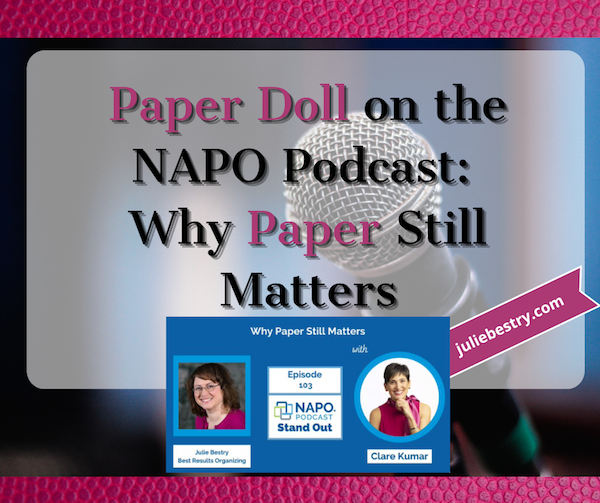
Today’s Paper Doll post is part confessional, part promotional, and part educational. But first…
Have you listened to any good podcasts lately?
I love sharing my research and philosophies of organizing and productivity here in the Paper Doll blog, but I know that sometimes it’s more convenient to listen to (or watch) material that interests you. To that end, back in May, I shared Paper Doll Picks: Organizing and Productivity Podcasts, a list of my favorite podcasts and podcasters in the realms of organizing and productivity. (If you didn’t check it out previously, now is a great time to find some new favorites!)
When I wrote Paper Doll on Planning & Prioritizing for Leadership, I even gave you a two-for-one, recommending you sign up for The Leader’s Asset, a July/August interview series I participated in, as well as sharing my interview on Dr. Frank Buck: Productivity for Total Control & Peace of Mind.
If you didn’t catch my episode, “Julie Bestry: Don’t Apologize…Organize!” the first time around, you can listen at the show link or via Apple Podcasts, Spotify, or all your usual yummy podcast hangouts. (Consider it a summer rerun.) Given the high temperatures around the country, why should you have to struggle and run clicking around the internet dial? Here’s the YouTube version.
Casting a Backward Glance
I started my business twenty years ago, the year that the federal government started prosecuting Enron, the term “Axis of Evil” was coined, and Kelly Clarkson won the first American Idol competition. I joined what was then the National Association of Professional Organizers (NAPO) in the spring of 2002.
When asked what I wanted to do with my business, I said that while I was looking forward to working one-on-one with clients to make their spaces more organized and their lives more productive, my dream project was to have my own newspaper or magazine column.
I started blogging (which is kind of like having a column) in 2007, the same year I became a Certified Professional Organizer.
Over the years, I’ve written some ebooks and had a book (now out of distribution) traditionally published.
I have also been interviewed for a variety of media outlets , including newspapers and magazines (including, I’m always delighted to say, Real Simple), as well as on local television and radio, and on the podcasts in the Paper Doll Picks poast, linked above.
But what I really want to tell you about is a particular career highlight for me.
The NAPO Stand Out Podcast (and a Case of Nerves)
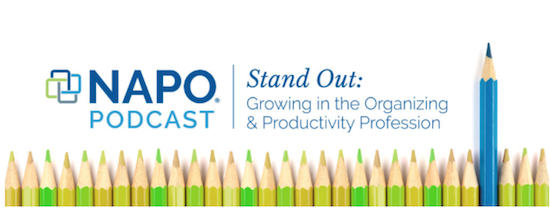
NAPO is still NAPO, but now that stands for the National Association of Productivity and Organizing Professionals. (As you’ve probably noticed, the focus of Paper Doll has also expanded to include more time management and productivity topics, along with paper and information organizing posts.) Since 2018, NAPO has had its own podcast, The NAPO Stand Out Podcast.
The NAPO Stand Out podcast invites organizers, productivity experts, and related experts to share their successes, challenges, best practices, proven strategies, industry developments, and fabulous anecdotes. Of course I listen, as it’s tailor-made for someone like me.
Near the end of last year, the host of the NAPO Stand Out Podcast, my friend Clare Kumar, messaged me to see if I’d like to be on the NAPO podcast.
Clare is a Canadian professional organizer, coach, and media darling, and as I’ve mentioned on these pages before, has a laugh that completely draws you in. She specializes in helping Highly Sensitive Persons (HSPs) optimize their professional performance, and she has her own podcast, Happy Space with Clare Kumar, all about helping HSPs find their own happy spaces. Clare is a force of nature.
Now, as you longtime readers know, I’m not exactly a shrinking violet. I’m always eager to talk (until the cows come home) about residential or business organizing, time management, Evernote, and everything else from notebooks to toxic productivity.
But the NAPO Stand Out Podcast was a different kettle of fish. One of its main audiences includes thousands of my professional organizing colleagues. This wasn’t a matter of talking to strangers who follow other people’s podcasts; this would be heard and seen by my peeps, including the professional organizing rock stars to whom I’ve looked up since I started my business.
The first-ever guest was Geralin Thomas, who is as fashionable as she is business-savvy, and has pivoted to training the next generation of organizing stars. The guest the week before I was set to appear was Harold Taylor, an absolute pioneer of time management and author of numerous books, including the seminal Making Time Work for You
Organize for an Accident: Don’t Crash Your Car Insurance Paperwork [UPDATED]
[Editor’s note: This post originally appeared on Paper Doll on 1/23/2020 and has been revised and updated as of 8/8/2022. As many college students are headed off or back to their universities with cars, this is an ideal time to discuss the finer points of auto insurance.]
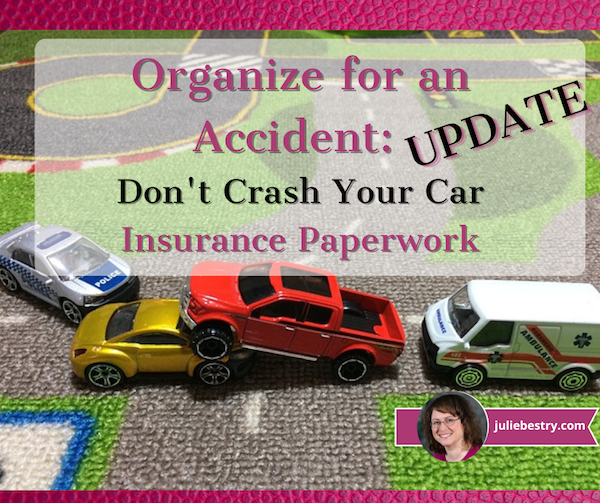
(Image by Andrea Closier on Pixabay)
What happens when an unstoppable force meets an immovable object?
In January 2020, Paper Doll was sitting at a traffic light, preparing to make a turn, when the car behind me answered that physics question. Luckily, it was more of a THUD or a BAM than a CRUNCH. However, even the most minor of fender benders can be scary and overwhelming. It’s definitely not the time to wish you’d been more organized with your car insurance paperwork.
Even the most minor of fender benders can be scary and overwhelming. It's definitely not the time to wish you'd been more organized with your car insurance paperwork. Share on XToday, we’re going to look at the different kinds of paperwork you need, and how to organize it, to make sure you are protected and confident regarding your car insurance.
APPLYING FOR CAR INSURANCE
Whether you’re new to driving, are changing insurance companies, or are insuring a new car in your household, there are certain documents you’re going to need when you apply. Having everything in order ahead of time will make the process move more smoothly. You will need information about yourself, any other drivers covered on the policy, and the vehicle, such as:
Social Security Number(s) — You will need the SSN of anyone who is to be covered on your policy.
Your Driver’s License — Some insurance companies will only need the license number; more old-school agents may want a photocopy of your license. If, like me, you don’t like letting your license out of your hands, make a few photocopies of your license and you’ll have them when you need them.
Your insurance company isn’t just verifying that you are licensed to drive. They’re going to check your driving record — also called a Motor Vehicle Report (MVR) in some areas — to verify that your license hasn’t expired or been suspended, and to see whether you’ve had any accidents, convictions, or traffic violations. Most states look at your driving record for the last three years; however, there are exceptions. Kansas and New Jersey reports go back five years; Colorado, Indiana, and West Virginia look back seven years.
WalletHub has a state-by-state guide to getting a copy of your MVR, with links, in case you want to check it for accuracy before seeking insurance. In my state, I can get a copy for $5 in person or or online; nationwide, costs range from $2 to $25 (sometimes plus processing fees to use debit/credit cards) per report. Be prepared to use an authentication app, like Google Authenticator, or receive a text or email or verify your identity.
Do not be scammed into using a non-governmental service that promises to get your MVR online for you; they up-charge a significant amount and are usually not any faster than going through your state’s website.
Financial History — Insurance companies do standard credit checks, so it’s a good idea to check your credit history at AnnualCreditReport.com (and not one of the shady copycats), as well as your credit score, to make sure there are no mistakes.
Your Current Insurance Declarations Page – You know that long page (or set of pages) in your policy with big numbers like $300,000/$500,000? (More on that, below.) Having that page will allow your new insurer to provide you with an apples-to-apples quote.
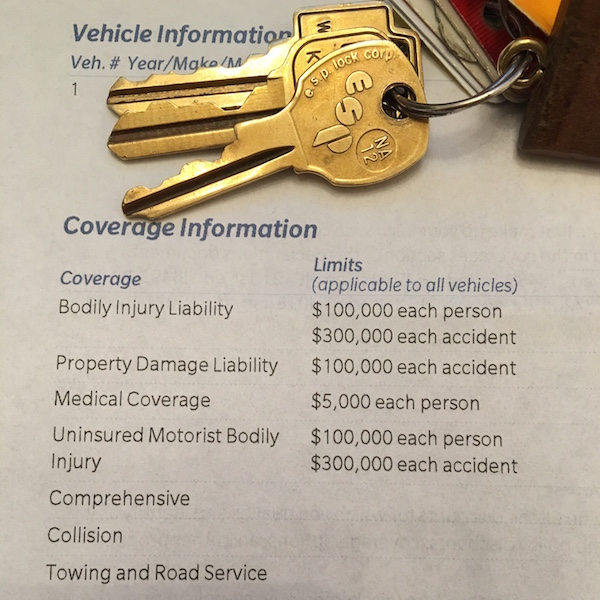
Vehicle Information Number (VIN) — This 17-character identifier is unique to your car and is built into your dashboard or imprinted in your driver’s side door frame. Your insurer uses this to verify that the car is not stolen and doesn’t have any problematic history.
Discount-Related Paperwork — There are a variety of ways to get a discount on car insurance. Your driving record (MVR) will verify if you qualify for a “good driver” discount, and you (or your teenager or college student) may be able to submit a current report card to qualify for a “good student” discount. To get the discount, students usually need to be under 25 and have no at-fault or moving violations on their MVR. A GPA of 3.0 (on a 4.0 scale) or Honor Roll/Dean’s List status is generally required.
You can also get multi-car discounts if you and your spouse both have cars, or multi-policy discounts if you carry homeowners’ or renters’ insurance with the same company.
If you’re over a certain age, you may be able to take a safe driver course, like one offered by AARP, to lower your rates.
You might be eligible for affinity discounts if you are a member of certain clubs, organizations, alumni associations, or sororities/fraternities. There are also often occupational discounts for members of certain professions, including first responders and medical professionals, educators, and government employees, so it’s worth asking your agent what discounts exist before you get too far in the application process.
ORGANIZING YOUR INSURANCE PAPERWORK
Once you have an auto insurance policy in place, you’re going to have paperwork. The more organized you can be, up-front, the less stress you’ll have to deal with in case of an accident or other issue.
Policy
This is the multi-page legal document that tells you everything about your coverage. It can be overwhelming. Make sure you go over it with your insurance agent so that you know and understand the essential elements of your policy, particularly the items on your declarations page, which spells out your coverage:
- Liability (also called Bodily Injury Liability) — These are the limits on your policy per person per accident. You may see $100,000/$300,000, which means you’re covered for any medical expenses and/or lost wages for anyone (including other drivers, passengers, and even bystanders) injured in an accident you cause, up to that amount.
- Property Damage — This pays to repair or replace things that get damaged (in an accident you cause), like other people’s cars, items in their cars that get damaged, actual property (like someone’s garage or mailbox). The dollar limit is quoted per accident. Be sure you understand the difference between collision and comprehensive. Collision covers damage to your car when it collides with another car, or a tree, or a Bob’s Big Boy. Comprehensive covers damage to your car caused by things like vandalism or theft by hooligans, or “natural” disasters (hail, tornadoes), a tree toppling onto your car, or Bambi taking a running leap at your hood.
Your policy may combine liability and property damage into one category, so you might see it listed with three numbers, like “100/300/50” which means $100,000 for injuries per person, $300,000 for total injuries per accident, $50,000 for damages to property.
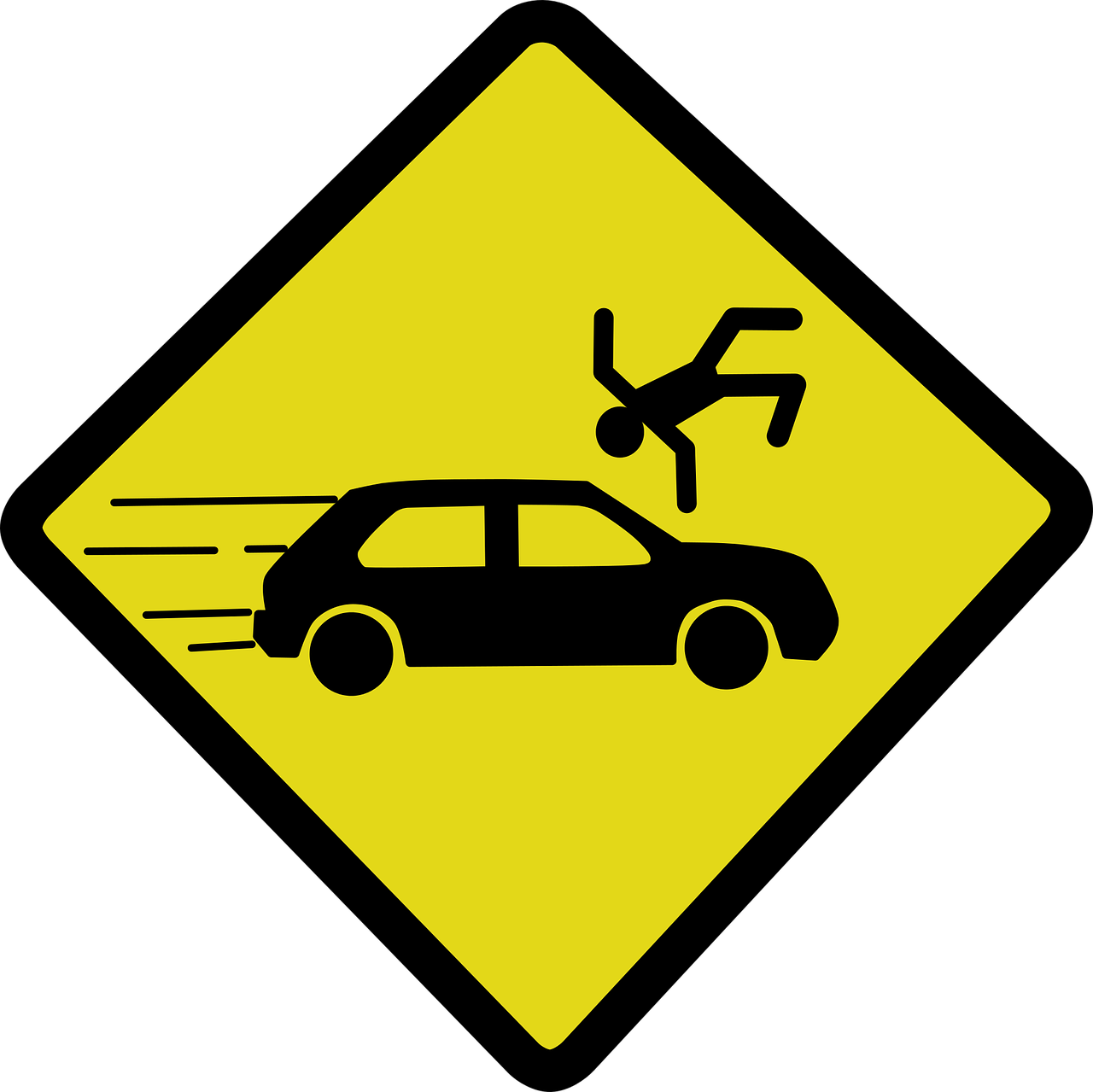
Depending on your state, your policy may also have (or even require) special types of insurance options, like:
- Uninsured and underinsured motorist coverage — If someone hits you but doesn’t have enough (or any!) insurance, it will cover injuries if you or your passengers get hurt. Basically, you’re insuring yourself against people who aren’t responsible enough to have (enough) insurance. There’s also a line item for uninsured motorist property damage; as you may have guessed, it covers your car if the person who hits you doesn’t have insurance.
- Personal injury protection insurance (PIP) — If you live in a “no-fault” state, this pays out for medical expenses for minor injuries or lost wages for you or your passengers. (Liability coverage is only invoked if the costs go beyond what PIP covers.)
- Medical payment coverage — Like PIP, this covers you or your passengers’ accident-related injuries, no matter which driver is at fault. It doesn’t cover lost wages, and the limits tend to be $5,000-10,000.
Your policy may also cover things like glass replacement damage, towing and road service, accident forgiveness (to keep your rates from going up after an accident claim) and loss of use (for a car rental while a vehicle is being repaired).
I encourage clients to make a file folder for each insurance policy they own (auto insurance, homeowners, etc.) and keep it in the Legal section of your Family File System.
The declarations page is a good cheat sheet for all of your coverage. You may want to make a photocopy and keep it in your glove compartment, or take a photo/scan to save in Evernote, Dropbox, or a similar app accessible on your phone.
Notes for Canadian Readers
Please note that all of the above refers to purchasing auto insurance in the United States. In Canada, different language is used. For example, in addition to provincial and territorial mandatory coverage, there are optional policies including “collision, specified perils, comprehensive, and all perils.” If you are seeking information regarding auto insurance (and organizing insurance paperwork) in Canada, please confer with an insurance professional (or a member of Professional Organizers in Canada).
Bills for Premiums
Insurance companies usually give you the option of paying annually, twice per year, or monthly. The less often they have to invoice you, the more likely you are to get a discount, so paying every six months can save you a bit over monthly bills.
If you receive paper bills, mark the payment date, amount, method of payment (and confirmation number, if applicable) on the invoice and file it in the Financial section of your Family File System.
If you tend to go paperless, print a PDF or take a screen shot of the confirmation screen and keep it in a “paid invoices” folder on your computer, and be sure to able it clearly, like “2022-May Ins-Car.”
Re-shopping Insurance Policies
In April 2022, I made a few calls to investigate the rates of competitive auto and rental insurance policies. When I found an auto policy that was significantly lower than what I’d been paying (while not increasing my associated renter’s policy) for an equivalent policy with an equally reputable insurance company, I contacted my agent.
I was surprised, delighted, and then admittedly annoyed when my agent “magically” found me an even more competitive rate. (A reminder: companies generally do not go looking for ways to reduce consumer costs!) However, even though I was staying with my same insurance company where I’d been for 24+ years, my policy was technically with a new sub-company, and my “accident forgiveness” guarantee went away, as if I were a new policy holder. However, I was able to retain that status with a $20 one-time fee. Caveat emptor!
So, do consider shopping for better rates/discounts at least every couple of years. It’s not fun, but it’s not as inconvenient as you might imagine. If you like your current insurance agent/company, give them the opportunity to surprise, delight, and slightly annoy you by magically finding better rates.
Proof of Insurance Cards
This little card has your name and address, your car’s VIN, make, and model, your insurance company’s name and contact information, and your policy number. It is the only document that verifies the coverage on each of your cars, so keep your proof of insurance somewhere safe in case you need to present it to a police officer or someone with whom you’ve had a driving “misadventure,” or to have information handy if you need to file a claim or report damage to your insurer.
Most insurance companies provide two proof of insurance cards on one piece of paper with your policy renewal. Consider putting one in your wallet and one in your glove compartment. If your glove box is not always tidy, you may want to consider something that keeps important documents front and center, like this car insurance and registration card holder in a bright color.



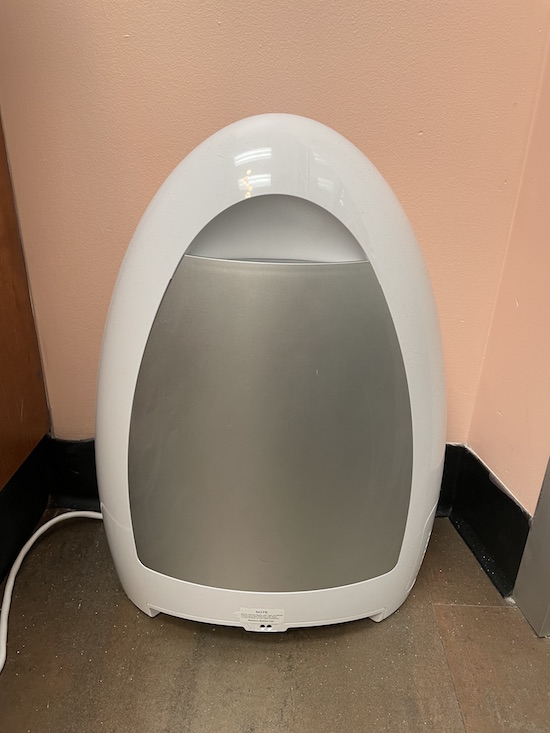


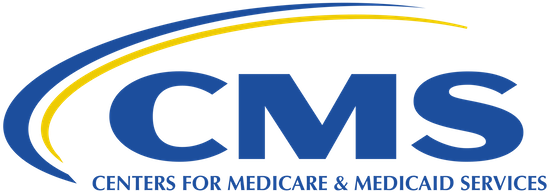





 Photo by
Photo by 



Follow Me